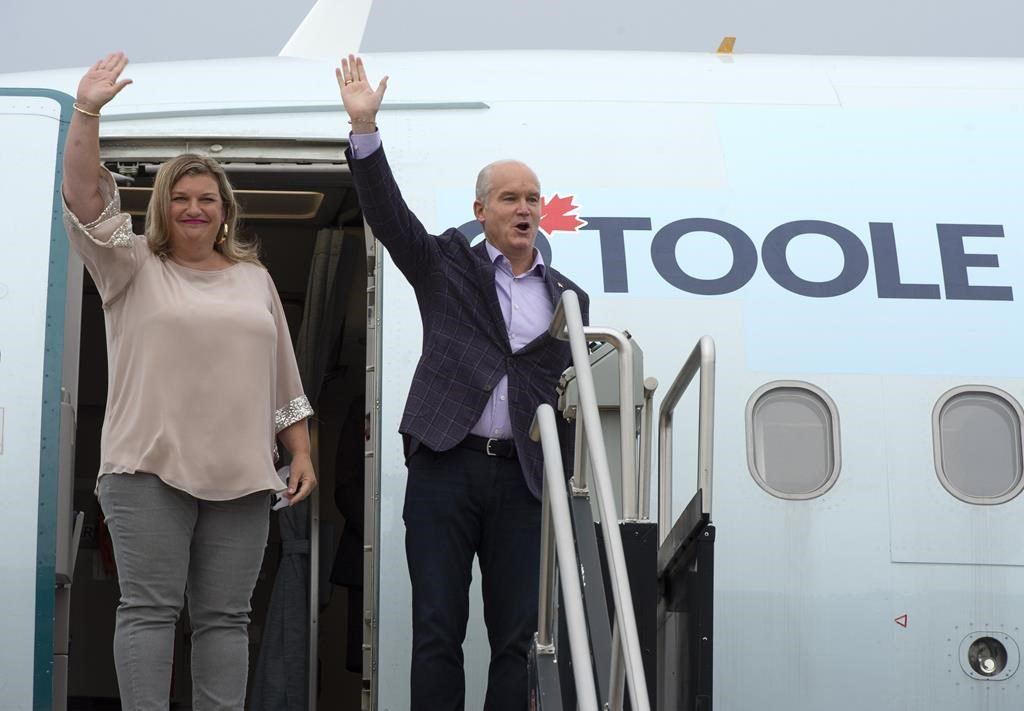Following the release of the NDP’s “costing” document – a term that deserves to be used only very loosely – leader Jagmeet Singh declared that he is going to get things done where the Liberals haven’t because he has “unlimited zeal.” And then he started hashtagging it, and the memes started rushing in, because that’s their digital campaign strategy apparently. The problem with “unlimited zeal” is that unlike zeal, resources and capacity are finite in government, which is why one needs to have priorities and plans to implement them. The NDP have neither, but are using some particular sleight of hand to try and convince people that they have both costing and credibility when in reality, they have a hollow shell.
Consider their costing document – it contains billions of dollars in new spending obligations that they balance off (somewhat) with promises of billions in new revenue sources. The reality is that there is no way they can book that revenue in the first or second year like their costing documents suggest. This is part of the problem with having the Parliamentary Budget Officer doing the costing for these platform promises – he has to work with the inputs that the parties give him, and because implementation of these policies matters, he can’t judge whether the implementation is feasible. Thus, he has his stamp of approval on their proposed annual net wealth tax – and most people aren’t going to read the “source of uncertainty” disclaimer at the bottom when the NDP simply plug the “verified” numbers into their costing document.
The description of the tax proclaims that it is meant to “impose an annual tax of 1% on net wealth owned by Canadian resident economic families on December 31st of each year, beginning in 2021.” It would be exempt on those whose net wealth is below $10 million, and on any wealth acquired through lottery winnings, because gambling apparently doesn’t have the same moral stench as capitalism. The problem? Our tax system is built toward individual filing – we don’t have “economic families” in tax law, and we would need to create a new structure to capture these revenues – and the American economists whom the NDP are modelling this policy from are clear that it needs to be “families” that can include siblings who live together, as well as children, to prevent income being sprinkled among them. There is also the added question of what counts as wealth under this regime (such as retirement savings), and it is going to take a lot of time to both legislate this, and for CRA to start making these determinations. There is no way they are going to capture $10.85 billion in the 2021-22 tax year. And yet they can claim the PBO signed off on it.
The trickier part of their costing document is that while they got the PBO to put all of their revenue projections on his letterhead, no matter that their input assumptions won’t pan out in reality because implementation matters (but hey, he gets to hide behind his “uncertainty” caveat), but for nearly all of their spending promises, they haven’t released any PBO costing, so you’re just going to have to trust them on it. As well, because their platform document was largely platitudes without any details of how they planned to implement anything, we don’t have any way to gauge whether these spending plans are realistic or achievable – and given that we know that the revenue projections aren’t, it really, really puts the question on the spending side.
The Institute for Fiscal Studies and Democracy, run by former PBO Kevin Page, was not sold by the NDP’s assurances in their document, giving it a 10/18 – very nearly a failing grade. They did give a failing grade inside to the transparency of their plans, which is not surprising considering that they haven’t released the spending side of their costing, and the only reason they didn’t fail the “Responsible Fiscal Management” portion was because they reduced their expected revenue generation figures by ten percent (which is not enough), and included a contingency fund. It’s not too dissimilar to how Mark Jaccard gave the NDP’s environmental plan a 2/10 for its credibility because they have no implementation plan or even a pathway to how they will get to their emissions targets, especially as some of their stated plans would tank the economy for little in the way of reductions.
This is why it’s crucial to actually spell out a plan for how to achieve their policy goals – it’s not enough to be enthusiastic, or to use political willpower, of “unlimited zeal.” Enthusiasm isn’t getting Jason Kenney or Doug Ford to sign onto universal child care, or for every premier other than PEI’s to sign up for universal pharmacare – including the NDP premier of British Columbia. For Singh to say he’ll get the job done under the premise that these premiers will sign right up because it’s him and not Justin Trudeau in front of them is fantasy. Likewise, insisting that he’ll get all of the remaining boil water advisories sorted on First Nations reserves within a year is also simply hand-waving because each community’s problem is different – capacity, training, maintenance, distance, ability to bring in materials (one community only made progress after an all-season road was completed) – and if they could be solved by throwing money at the problem, they would be by now as the current government has not been shy about doing just that. Singh is lambasting Trudeau for not fulfilling his promise in the desired timeline while at the same time making a promise he can’t keep.
It’s not enough in politics to simply say you want to do something, and that it’s just a matter of willpower. That’s not how the real world works, and it’s doing a disservice to voters to pretend otherwise. We also need journalists to step up to demand answers on implementation, and to stop just taking the PBO’s word as the final authority because of the problems he has with inputs. Willpower or “unlimited zeal” is not an implementation plan, and it only sets up for future disappointments, as Singh has only been too happy to remind the Liberals, apparently lacking the self-awareness to see that he’s simply doing more of the same.







